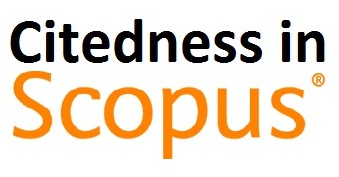Design and Build an Industrial Work Practice Presence Information System Using Web-Based GPS
DOI:
https://doi.org/10.38043/tiers.v3i2.3738Keywords:
Design and Bluid, Information Systems, Presence, GPS, Codeigniter 3Abstract
The design of this industrial work practice attendance information system can help the SMK Model PGRI 1 Mejayan to speed up the attendance process. This system is designed and built to make it easier for the school to find out the activities and positions of students who are doing industrial work practices by locking latitude and longitude. With the construction of this information system, the attendance process will be more closely monitored and reduce attendance manipulation. The purpose of this study was to determine the design and development of an industrial work practice attendance information system using a web-based GPS (Global Positioning System) at SMK Model PGRI 1 Mejayan. This system development method uses a system development model with the Rapid Application Development method and in its design uses the UML model. The result of this research is an industrial work practice attendance information system using a web-based GPS at SMK Model PGRI 1 Mejayan, and made using the programming language PHP, HTML 5, CSS, Java Script, Code Igniter 3 framework and using the MySQL Database Management System. In making this system using the Visual Studio Code text editor.
Downloads
References
I. Indrawan, Jauhari, and E. Pedinata, Manajemen Peserta Didik. 2022. Pasuruan : Penerbit Qiara Media
J. Wilson-Scott, “Both absent and omnipresent: the dead mother in Fleabag,” Fem. Media Stud., vol. 20, no. 2, pp. 273–283, 2020, doi: 10.1080/14680777.2018.1546207.
A. Haryanti, KIAT SUKSES MELAKSANAKAN PRAKTEK KERJA LAPANGAN DI MASA PANDEMI COVID-19. 2022. Tanggerang: Pascal Books
S. M. P. 1 Mejayan, “Visi Dan Misi Sekolah,” SMK Model PGRI 1 Mejayan, 2021. https://smkpgri1mejayan.sch.id/profil/.
Y. Herdiana and Rustiyana, “Rancang Bangun Aplikasi Presensi Siswa Untuk Mengidentifikasi Kehadiran Siswa Di Lingkungan Sekolah Berbasis Android Dan Gps,” Tematik, vol. 5, no. 2. pp. 24–39, 2018, doi: 10.38204/tematik.v5i2.157.
J. Kristiadhy and A. J. Gundo, “Perancangan Aplikasi Presensi Siswa Berbasis Website di SMK Negeri 1 Tengaran Menggunakan Webcam dan GPS Guna Mengurangi Risiko Penularan Virus COVID-19,” J. Ilm. Wahana Pendidik., vol. 8, no. 13, pp. 414–427, 2022, [Online]. Available: http://www.tjyybjb.ac.cn/CN/article/downloadArticleFile.do?attachType=PDF&id=9987.
S. Alfeno and R. E. C. Devi, “Implementasi Global Positioning System (GPS) dan Location Based Service (LSB) pada Sistem Informasi Kereta Api untuk Wilayah Jabodetabek,” Sisfotek Glob., vol. 7, no. 2, pp. 27–33, 2017, [Online]. Available: https://journal.stmikglobal.ac.id/index.php/sisfotek/article/view/146.
M. Elouardi, K. Benhachemi, and M. El-Ayachi, “Validation of integrated water vapor derived from global positioning system over Morocco,” Proc. - 2020 IEEE Int. Conf. Moroccan Geomatics, MORGEO 2020, pp. 0–3, 2020, doi: 10.1109/Morgeo49228.2020.9121897.
Agung Chandra and Bambang Setiawan, “Optimasi Jalur Distribusi dengan Metode Vehicle Routing Problem (VRP),” Manaj. Transp. Logistik, vol. 05, no. 02, pp. 105–116, 2018, [Online]. Available: https://journal.itltrisakti.ac.id/index.php/jmtranslog/article/viewFile/233/140.
R. R. Harahap and & Hidayatullah, “Sistem Informasi Google Maps Dengan Menggunakan Vb.Net,” J. Sci. Soc. Res., vol. 1, no. February, pp. 36–41, 2018, [Online]. Available: http://jurnal.goretanpena.com/index.php/JSSR.
A. Quyoom, “Security Issues of Vehicular Ad Hoc Networks in OSI layers,” vol. 2, no. 4, pp. 127–134, 2017, doi: 10.38043/tiers.v3i1.3520.
S. Adrianto and Y. N. Fitri, “Sistem Penilaian Siswa Kurikulum 2013 Pada Sdn 007 Bagan Besar Menggunakan Bahasa Pemrograman Php,” I N F O R M a T I K a, vol. 11, no. 1, p. 21, 2019, doi: 10.36723/juri.v11i1.151.
A. Padmanaba, E. Kumalasari, and D. Andayati, “Komparasi Penggunaan Framework Codeigniter Vs PHP Native Pada Sistem Informasi Manajemen Surat Sekretariat DPRD Pemalang,” J. Scr., vol. 8, no. 1, pp. 1–6, 2020.
F. H. Utami and Asnawati, Rekayasa Perangkat Lunak. 2015. Sleman: Deepublish
D. Amalfitano, V. Riccio, P. Tramontana, and A. R. Fasolino, “Do Memories Haunt You? An Automated Black Box Testing Approach for Detecting Memory Leaks in Android Apps,” IEEE Access, vol. 8, pp. 12217–12231, 2020, doi: 10.1109/ACCESS.2020.2966522.
R. B. Trengginaz, A. Yusup, D. S. Sunyoto, M. R. Jihad, and Y. Yulianti, “Pengujian Aplikasi Pemesanan Tiket Kereta berbasis Website Menggunakan Metode Black Box dengan Teknik Equivalence Partitioning,” J. Teknol. Sist. Inf. dan Apl., vol. 3, no. 3, p. 144, 2020, doi: 10.32493/jtsi.v3i3.5349.
W. N. Cholifah, Y. Yulianingsih, and S. M. Sagita, “Pengujian Black Box Testing pada Aplikasi Action & Strategy Berbasis Android dengan Teknologi Phonegap,” STRING (Satuan Tulisan Ris. dan Inov. Teknol., vol. 3, no. 2, p. 206, 2018, doi: 10.30998/string.v3i2.3048.
E. Junirianto and N. Kurniadin, “Pengembangan Aplikasi Point Of Sale Berbasis Android Menggunakan Metode Rapid Application Development,” JOINTECS (Journal Inf. Technol. Comput. Sci., vol. 5, no. 3, p. 211, 2020, doi: 10.31328/jointecs.v5i3.1564.
A. Maulana, A. Solichin, and M. Syafrullah, “Penerapan Metode Haversine Pada Sistem Informasi Geografis Untuk Penentuan Lokasi Pembangunan Menara Telekomunikasi Pada Kota Tangerang,” Indones. J. Softw. Eng., vol. 4, no. 1, pp. 45–51, 2018, doi: 10.31294/ijse.v4i1.6294.
Downloads
Published
How to Cite
Issue
Section
License
Copyright (c) 2022 Chesiya Novia Wulandari

This work is licensed under a Creative Commons Attribution-ShareAlike 4.0 International License.





















